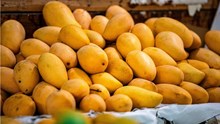
Despite a massive increase in Covid-19 cases, India's agriculture sector is expected to expand, with farmers expected to increase production to record levels in the coming kharif or summer-sown season, following a pandemic-defying result in 2020.
The Union government anticipates increased sowing and demand from the agricultural sector. It has provided instructions to ensure that essential inputs such as fertilizers, seeds, pesticides, and machinery are always available and supplied in a timely manner.
Millions of farmers have worked tirelessly to keep agricultural operations running during the pandemic, helped by a waiver of Covid-related restrictions for the farm sector. Another reason why the farm sector has outpaced other sectors of the economy is that the pandemic has been particularly hard on cities and small towns, sparing farming activities in the countryside.
According to a 8 study, nearly half (48%) of all Covid-19 cases recorded in India in March came from urban areas, which account for just 14% of the population, with cities having the highest proportion of new infections since June 2020. “We foresee a nearly 10% rise in fertiliser demand,” an agriculture ministry official said on condition of anonymity.
The prediction for a typical 2021 monsoon, the third year in a row of ideal rains, has been a major source of hope. The India Meteorological Department predicted 98 percent rainfall during the monsoon season from June to September on April 16. Rainfall ranging from 94 to 106 percent is considered "natural."
DV Sadananda Gowda, the Minister of Fertilizers, reviewed the demand-supply situation on April 27. Officials predicted that fertiliser demand in the summer-sown season will be about 35 million tonne, up from 32 million tonne in the same timeframe last year, according to a second official. According to the study, the nation has sufficient fertiliser stocks.
Agriculture Minister Narendra Tomar convened a meeting of strategists and officials on April 30 to chart the course for the so-called "Kharif Campaign 2021." Tomar declared a 307 million tonne foodgrain production goal for 2021-22, up from 301.92 million tonne in 2020-21.
There were ample supplies of plants, fertilisers, chemicals, and equipment, except for soyabean and maize seeds, according to agriculture commissioner Suresh Malhotra, who spoke at the meeting. Farmers could use their own "saved seeds" from previous harvests in case of an emergency, he added. States have been asked to obtain these seeds from the National Seed Corporation.
When a harsh lockout sparked a countrywide recession in 2020, the agriculture sector demonstrated resiliency to expand. When the rest of the economy shrank by -24.4 percent in the second quarter of 2020, it rose by 3.4 percent. The latest available data shows that overall growth in India increased by 0.4 percent in the December 2020 quarter. In the same quarter, agriculture increased by 3.9 percent.
“When you have a normal monsoon, it takes care of much of the problems in agriculture by itself. But, as RS Mani, a former faculty member at the Tamil Nadu Agricultural University, pointed out, the government should be prepared with appropriate plans for areas where droughts are still likely in a typical year.

















